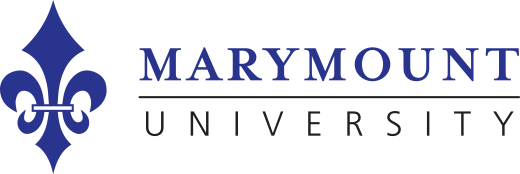5 Tips to Achieve Organizational Alignment

When a North American mining company studied their own key data points, it became clear that something wasn’t working. Every year, their operation was growing simultaneously less efficient and more expensive.
A few states away, a chain of retail apparel stores was experiencing a decline in both foot traffic and online sales. Their customer experience was clunky and outdated. In order to stay afloat in a competitive market, they’d have to find out how to appeal to their target market again.
Meanwhile, a live events company specializing in music festivals was seeing a downturn in attendance as customers embraced virtual events. At the same time, operational costs continued to increase. They recognized that they would need to embrace the evolution of events in order to improve their profit margins.
But just one year later, everything had changed.
The mining company made an initial investment in IT infrastructure that reduced operational costs by 18%. By increasing technological capacity, they greatly improved their efficiency. This shift enabled them to pursue sustainable mining practices, earning them a valuable certification, reducing their environmental impact by 30%, and improving their reputation in the community.
The retail chain realized that connecting with their audience through an omnichannel strategy was the best way to re-engage potential customers. Through comprehensive customer journey mapping, they increased online sales by 20% and improved customer satisfaction both digitally and in-store by 15%.
The live events company embraced the digital world instead of fighting it. By implementing AR and VR into their events, they offered a fresh experience to ticketholders, improving sales by 25%. They also incorporated machine learning into their processes, which reduced operating costs by 20% the following year.
How did these businesses know which changes to make? Why were each of their efforts successful? While all of these companies were dealing with unique challenges within their industries, they needed the same solution: organizational alignment. Implementing this business strategy brought unprecedented success to each of these companies – and it holds the same potential for countless businesses and communities today.
What is organizational alignment?
Organizational alignment is a business strategy that ensures every aspect of an organization works together effectively. This strategic alignment works in two directions — horizontally across departments and vertically from leadership down — in order to achieve a common goal. Businesses with strong alignment understand the importance of shared goals and clear strategy. They know that when everyone is pulling in the same direction and with the same enthusiasm, it’s much easier to find success.
The benefits of organizational alignment are hard to overstate. When this synergy is implemented effectively, companies see higher rates of productivity, improved collaboration and problem-solving, and consistent top-quality work across departments. How can organizations implement this worthwhile strategy to attain company goals? It turns out, it takes the right kind of leader.
Qualities of Successful Organizational Alignment Leaders
Successful leaders in the workplace often hold admirable credentials. Perhaps they’ve earned a doctorate of education in leadership or worked their way into a leadership position at a prominent organization. But in addition to the skills found on their resume, these leaders hold several invaluable qualities, known as “soft skills,” that help them find success with organizational alignment.
Communication and Collaboration
Many organizations are full of people with good ideas. What makes a good leader, though, is the ability to communicate those ideas effectively and inspire collaborative efforts to bring them to life. Even complex and difficult situations can be solved with effective communication and healthy teamwork.
Integrity and Ethics
Cutting corners may appear to be effective, but good leaders know that following ethics and possessing integrity is best for business in the long run. When people know they can trust their leaders, the workplace becomes better for employees and stakeholders alike. Trust instills an atmosphere of productivity and alignment.
Strategy and Efficiency
Strategic thinking provides a clear direction for an organization's vision. The best leaders can ideate strategies, implement them effectively, and make quick decisions that improve the organization as a whole.
Resilience and Adaptability
No matter how brilliant a leader may be or how infallible a plan may seem, every organization experiences unexpected roadblocks. The mark of a good leader is found in someone who does not let vision crumble when this happens. Instead, they adapt, embracing needed changes to get the company back on track. This resilience inspires others to adopt the same mindset.
Accountability and Growth
Even the best leaders make mistakes – and leaders who own up to failures and grow from them are those destined for greatness in the workplace. When leaders possess a sense of ownership, others also take on the mantle of responsibility for their own work. With this mentality, teams are more likely to achieve long term goals, manage change, and improve continuously.
Shifting Strategic Direction: Why and When?
Great organizational leaders do not look to shift strategic direction on a whim. Instead, they make strategic change when they sense one of these four organizational markers.
Dated Strategy
Sometimes, a strategy that once worked flawlessly is no longer successful. Companies that hold on to past structures and strategy tend to get left behind as the world evolves. Good leaders are willing to shift strategic priorities when needed to achieve organizational alignment.
Strategy and Vision Misalignment
Often, an organization adopts a renewed vision. Leaders who are attuned to organizational alignment know that strategy must shift alongside that new vision. Internal conflicts between mission and vision bring productivity to a halt, stirring up frustration and confusion. Bringing alignment between vision and strategy, on the other hand, is a recipe for synergy and success.
Industry Disruptions
They say change is the only constant, and every industry experiences disruptions from time to time. When new technology revolutionizes a process, new market regulations require change, or another company uncovers a new competitive advantage, great leaders quickly jump into action. They know that disruptions, while uncomfortable in the moment, could unlock a new level of success if managed correctly.
Market Dynamics
Even without the suddenness of an industry disruption, market dynamics are ever-evolving. Leaders who aim for strategic alignment are always watching for changes in customer behavior or emerging market models that prompt internal shifts.
5 Tips for Effectively Driving Organizational Alignment
1. Determine organizational goals.
Before an organization can be successful in its endeavors, success must be defined. Many companies struggle to meet objectives, work collaboratively, and maximize efficiency simply because they aren’t sure what goals they’re trying to achieve. Indeed emphasizes the importance of setting both “official” and “operative” operational goals. Official goals are typically long-term, publicly announced objectives, and operative goals are actionable internal steps that help an organization achieve them.
Organizational goals can be as unique as an organization itself. Some common goals include:
- Increased efficiency
- Better customer service
- Increased brand awareness
- Improved sustainability
- Increased profitability
- Higher employee satisfaction
- Increased security
2. Communicate effectively.
Once an organization has clearly defined goals and objectives, it must communicate them just as clearly. This communication is often internally focused, ensuring that every team member is working toward the same goal. When results are achieved, some communication shifts outward, letting audiences know about sustainability or security improvements.
No strategy can be executed well without excellent communication. Remember that organizational alignment often introduces new processes, workflows, and hierarchies into an organization. Leaders may encounter initial pushback or confusion. Inviting two-way communication into the process ensures that all parties feel heard, which helps them get on board with new objectives and operations.
3. Provide support.
After setting goals and communicating them clearly, organizational leaders must support their teams in implementing changes. Provide training and resources whenever possible, and keep channels open if employees have questions and concerns.
The soft skills great organizational leaders possess will serve them well in this transitional time. Their own resilience, adaptability, and integrity will prompt others to embody these same traits. This fosters a sense of collaboration around a shared culture, not just a shared goal.
4. Commit to regular reviews.
Once a strategy is in place, determine a plan to assess its success. The McChrystal Group, a consulting firm specializing in organizational alignment, has found that quarterly strategy reviews offer a rhythmic way to firm up timelines, identify sticking points, and track overall alignment progress on long term goals.
5. Celebrate victories along the way.
Great organizational leaders know that victory is not found in a single step. Along the road to achieving long-term goals and highly effective organizational alignment, there will be a few stumbles — but there will also be much to celebrate. Forbes studied the importance of celebration in the workplace and discovered that nearly 7 in 10 employees said they would work harder if they felt that their efforts were recognized and appreciated. Leaders should celebrate wins whenever possible to improve employee retention and boost workplace morale.
Drive Positive Change in Any Field
Organizational leaders can shape workplaces and communities for the better. If you’re ready to drive meaningful change, consider earning an online Ed.D. in Educational Leadership and Organizational Innovation from Marymount University. This unique program will empower you as a change agent ready to initiate and inspire change from within, no matter what organizational issues you face.
The Ed.D. is the highest level of education for those who want to become innovative leaders in their work environments, with colleagues, or in the community. Typical Ed.D. programs require 4 years of study. At Marymount, a nationally recognized College of Distinction in Education and Business, you’ll earn a valuable degree 100% online in less than three years. With no GRE/GMAT requirement and quality coursework accessible from the comfort of your home or office, this degree program can support you in your career right away.
At Marymount, you’ll find a curriculum grounded in ethics and designed for change agents in every field. Supportive faculty and a diverse network will help you learn to implement change and foster innovation, and our Dissertation in Practice (DiP) emphasizes applying research and theory to solve a real problem facing your organization or community today.
An Ed. D. from Marymount is the perfect next step for anyone who is ready to grow as a leader in your current career or pursue leadership in your chosen field.
Connect with an enrollment advisor to get started.
